Non-urgent government operations are closed December 24 to January 1, reopening January 2. View available services during this period.

John Carter Callaghan was born in Hamilton, Ontario in 1923. As a child he was fascinated by the structure and function of the human body. One of his most treasured possessions was a copy of Gray’s Anatomy. At the age of 14, John Callaghan was busily dissecting animal hearts and lungs purchased from the local butcher shop. Predictably his interest led him to the study of medicine and he graduated from the University of Toronto in 1946 as an M.D.
He spent a year as Junior Rotating Intern at Toronto General Hospital before becoming Demonstrator in Anatomy at the University and part-time Medical Officer at Lynhurst Lodge, Toronto. From 1948 to 1949, he was Medical Officer for the Department of Indian and Eskimo Affairs at Aklavik, N.W.T., then became a Research Fellow at the Banting Institute in Toronto. With Dr. W. G. Bigelow, Dr. Callaghan developed a method of hypothermia that is now routinely used in all open-heart surgery.
During 1949 to 1950 Dr. Callaghan was the co-developer of the world’s first cardiac pacemaker, an intravenous device that has restored the rhythm of the slow or uneven heartbeat of millions of people all over the world enabling them to lead normal lives.
In 1950, he became Senior Intern at Sunnybrook Hospital in Toronto. From 1951 to 1954, he was Assistant Resident in Surgery, Assistant Resident, Senior Resident and Fellow in Cardiac Surgery at Toronto General Hospital, after which he went to England as Assistant to Sir Russell Brock at Guy’s Hospital in London. In 1955, Dr. Callaghan was appointed Fellow in Surgery by Stanford University and moved to the University of Alberta where he became Lecturer in Surgery. In 1958, he was appointed Assistant Clinical Professor of Surgery and Head of the Division of Cardiovascular and Thoracic Surgery.
In 1956, Dr. Callaghan performed a number of Canadian firsts in heart surgery, including the first open-heart surgery and the first successful complete repair of the blue baby malformation. He was responsible for developments in open heart surgery that received international acclaim and the high level of his abilities in the field of cardiovascular surgery resulted in operations that saved many lives.
Dr. Callaghan was an examiner, specialty of Cardiovascular Surgery for the Royal College of Physicians of Canada, and past president of the Canadian Society of Cardiovascular and Thoracic Surgeons. He was also Past President of the Western Thoracic Surgical Association, an American society of chest and heart surgeons, and is past president of the prestigious Lyman Brewer III International Surgical Society. As president of this Society, in 1981, Dr. Callaghan headed a group of prominent surgeons to inaugurate the first international heart and thoracic meeting ever held in the People’s Republic of China.
Among the honours received by Dr. Callaghan are: the Lister Prize in Surgery and the Reeve Prize in Surgical Research from the University of Toronto 1949-50; the Alberta Achievement Award for Excellence in medical research from the Government of Alberta 1983; Citizen of the Year, City of Edmonton 1984; Honourary Chairman, Alberta Heart Foundation 1984; Distinguished Scientist Award, North American Society of Pacing and Electrophysiology 1985; Officer of the Order of Canada 1985.
In September 1986, Dr. Callaghan retired from his position at the University of Alberta Hospital as Head of the Division of Cardiovascular and Thoracic Surgery.
Dr. John Carter Callaghan used his exceptional skill to save lives and improve the quality of life for millions of people. His contribution to mankind is of global significance and the impact of his work will continue to benefit many future generations.
